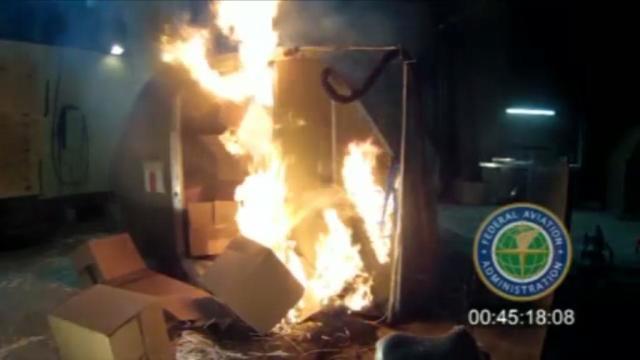Eric Darcy is NASA’s go-to guy for battery safety. He is Battery Group Lead for Projects & Integration at NASA-Johnson Space Center in Houston, Texas, and consults frequently with the National Renewable Energy Laboratory in Colorado. His talk at the First Sustainable Aviation Symposium was titled, “Passively Thermal Runaway Propagation Resistant Battery Module That Achieves > 190 WH/KG.” The output may not sound like much, being at the middle-to-high end of lithium battery performance: but the promise of passive thermal runaway resistance is all-important. Remember, too, that larger output numbers are usually for individual cells. Putting cells into a battery pack with battery management system (BMS) components, wiring, etc. usually reduces overall performance per weight. A few years ago, Dr. Darcy told his table at lunch during a symposium, that by matching batteries closely (to a fanatical degree, it seemed), overseeing their production under conditions exceeding six sigma quality control levels, and testing them intensely, he had built battery packs for space …
The Sustainable Aviation Symposium – A Wealth of Knowledge
Coming May 6th and 7th, the first-ever Sustainable Aviation Symposium will take place at the Sofitel San Francisco Bay Hotel. This year’s presenters include an international array of accomplished talent in aerodynamics, power, and energy storage, with a few surprises on tap. Keynote speakers include: NASA Chief Scientist Dennis Bushnell PADA Trophy winner and Pipistrel Designer Dr. Tine Tomazic Dr. Joseph Kallo of the DLR (Germany’s NASA) Lehigh University’s Dr. Justin Jaworski Pelican Aero Group’s Philip Barnes Additional presentations include Nobel Prize winner Dr. Benjamin Santer of the Intergovernmental Panel on Climate Change; Eric Raymond, the highest time solar pilot in the world (his latest 6-seat solar aircraft pictured above); Dr. Yi Cui of Stanford University with the latest in battery technology, Dr. Daniel P. Raymer on Inspirations from the Vought 173 and PADA Trophy winner Boris Popov, whose ballistic parachutes have saved hundreds of lives. Another dozen, including NASA battery expert Dr. Eric Darcy and Siemens e-Aircraft head Dr. Frank …
EAS IX: Short Circuiting Batteries on Purpose
Recent news from the world of insurance claims adjustors brings us back to ways inspired battery designers might reduce or eliminate certain types of claims, and make electric flight safer. Even when international agreements don’t make progress along those lines. Insurance Claims and international Agreements With recent news of Federal Aviation Administration interest in lithium-ion batteries arising from fires caused by thermal runaways, shipments of large numbers of batteries may be banned. Claims Journal, an insurance industry news line, quotes Angela Stubblefied, an FAA hazardous materials safety official, as saying, “’We believe the risk is immediate and urgent.’ She cited research showing the batteries can cause explosions and fires capable of destroying a plane. “FAA tests show that even a small number of overheating batteries emit gases that can cause explosions and fires that can’t be prevented by current fire suppression systems. Airlines flying to and from the U.S. that accept lithium battery shipments carry 26 million passengers a year, …
EAS IX to be A Gala Gathering
Dr. Seeley sent this along today. On May 1, 2, 2015, the world’s leading experts will converge for the 9th Annual CAFE Electric Aircraft Symposium in the beautiful Sonoma Wine Country. The confirmed presenters include: Airbus on “The e-Fan Design” Michigan’s Satki3 CEO Ann Marie Sastry on “Solid State Energy Storage” Italy’s Eric Raymond of GFC I Team-eGenius on “Sunstar and the SunSeeker Duo” Slovenia’s Tine Tomazic of GFC I Team Pipistrel USA on “Converting GA Aircraft to Electric Propulsion” UCR’s Zach Favors on “Beach Sand for Long Cycle Life Li-ion Batteries” Northrop-Grumman’s J. Philip Barnes on “Regenerative Electric Flight” NASA’s Dr. Eric Darcy on “Battery Safety” Ford/Ricardo’s Neil Johnson on “Li-ion BMS & Gauging” Launchpoint’s Michael Ricci on “Propulsion by Wire” Also expected are Northrop-Grumman’s Barnaby Wainfan on “Low Aspect Ratio Electric Aircraft”, Ray Pekar of Autoliv on “Airbags for Impact, Rafts and EMAS”, Bose Automotive Suspension lead Neal Lackritz on “Active Suspension for Sky Taxis” and Jeff DeGrange of …
Dr. Eric Darcy, Building Better Batteries
Dr. Eric Darcy, the battery group leader at NASA’s Johnson Space Center in Houston, Texas was selected last year as an Innovation Ambassador, and worked with the National Renewable Energy Laboratory (NREL) in Golden, Colorado to devise mathematical models for lithium ion battery performance. This was part of NASA’s Innovative Partnerships Program, which allows some of NASA’s most talented scientists and engineers to work at several of America’s leading innovative external research and development organizations. NASA explains that the “inaugural group of ambassadors is initiating the planned annual program targeting opportunities to create NASA partnerships and new innovation sources outside of the traditional aerospace field. During assignments of up to one year, the NASA ambassadors will share their own expertise while learning about innovative products, processes and business models. After returning to NASA, the ambassador may share new ideas with co-workers and implement innovations within their organizations.” Dr. Darcy’s work has far-reaching consequences, especially since it involves the design of batteries …


